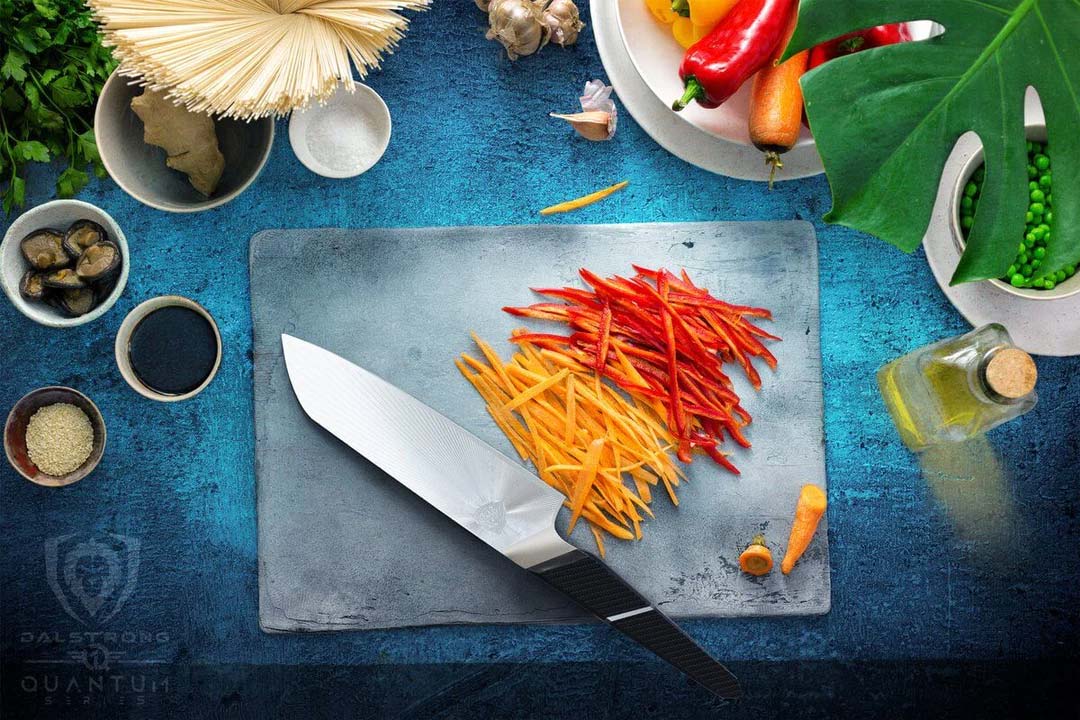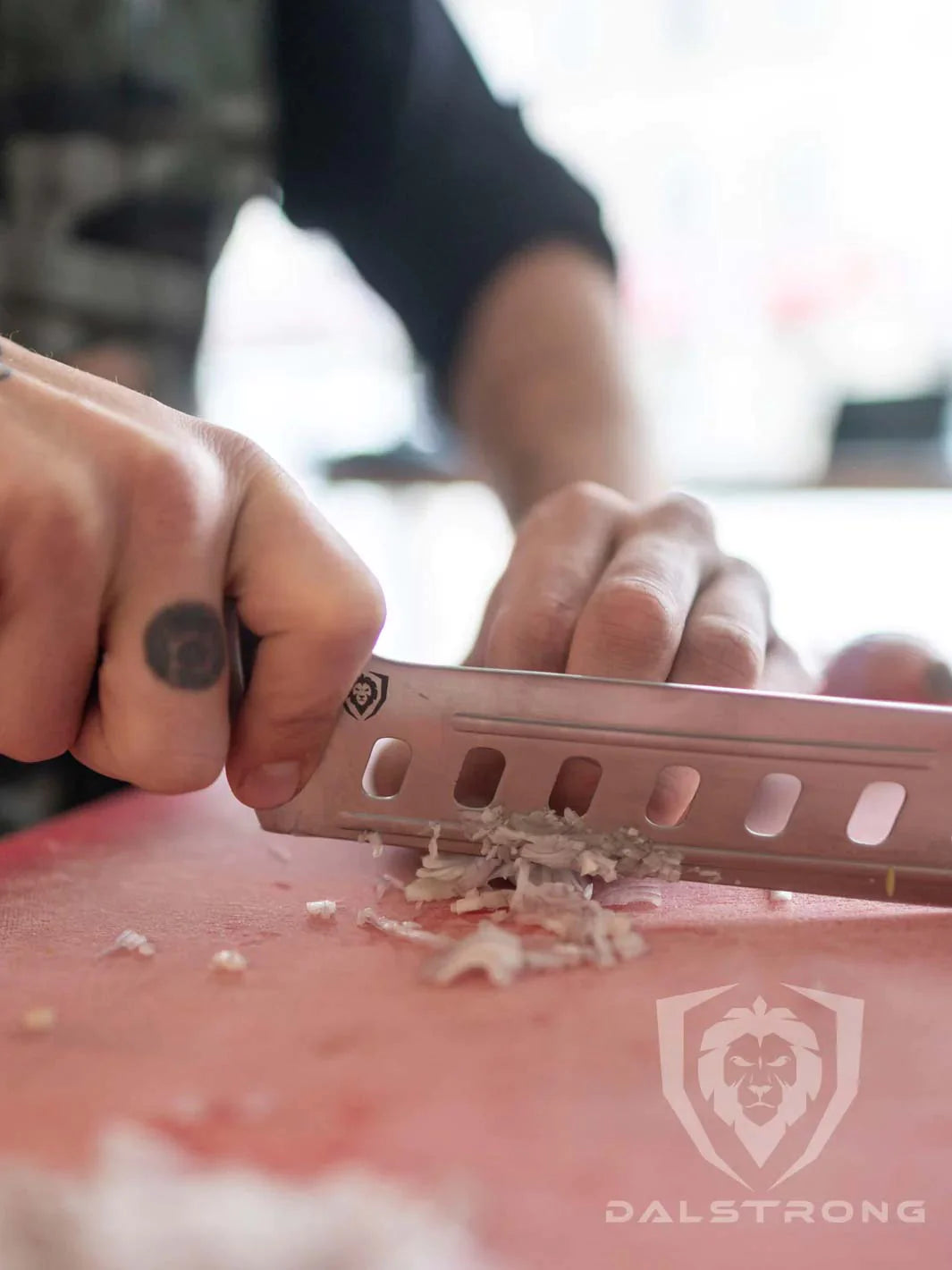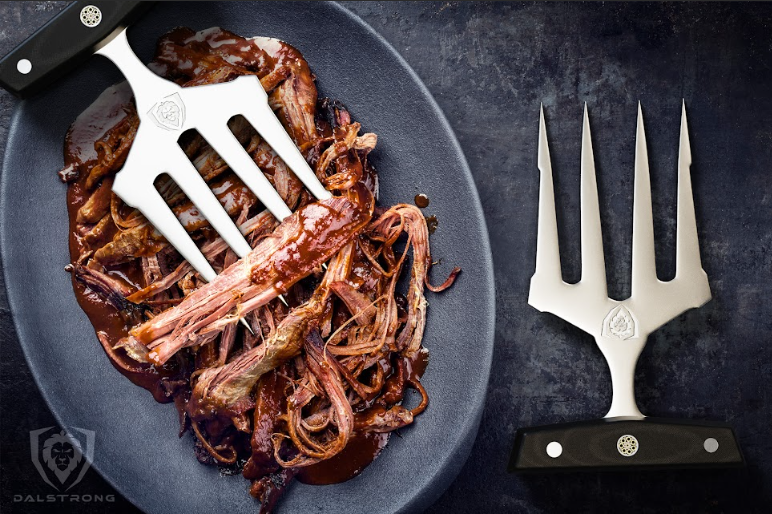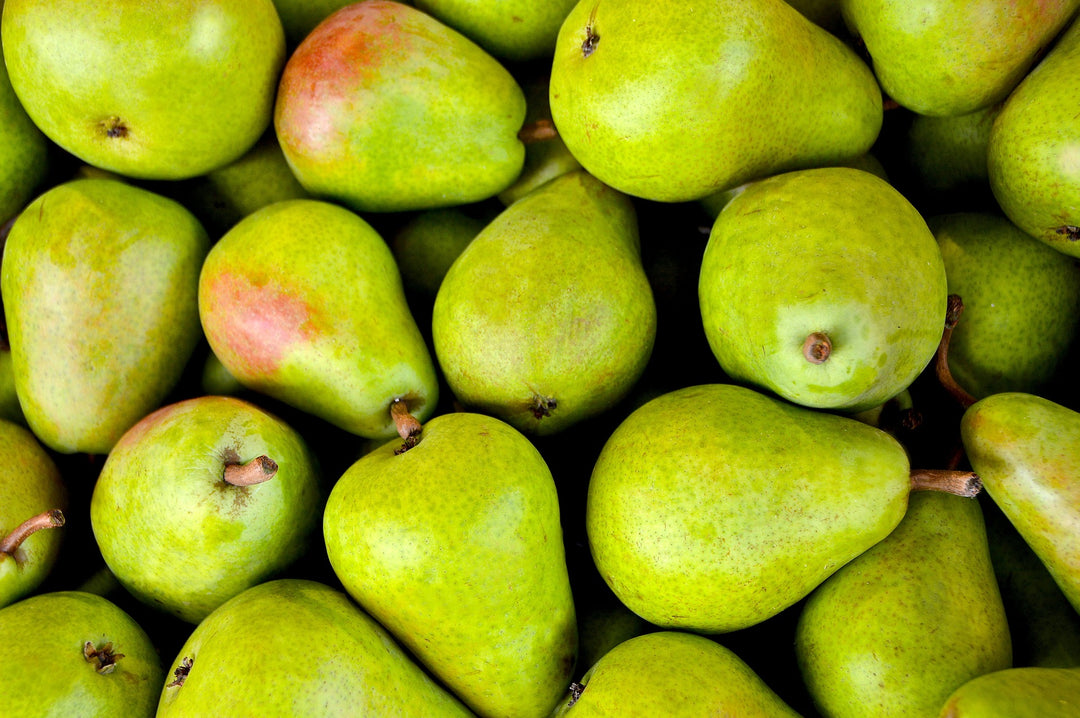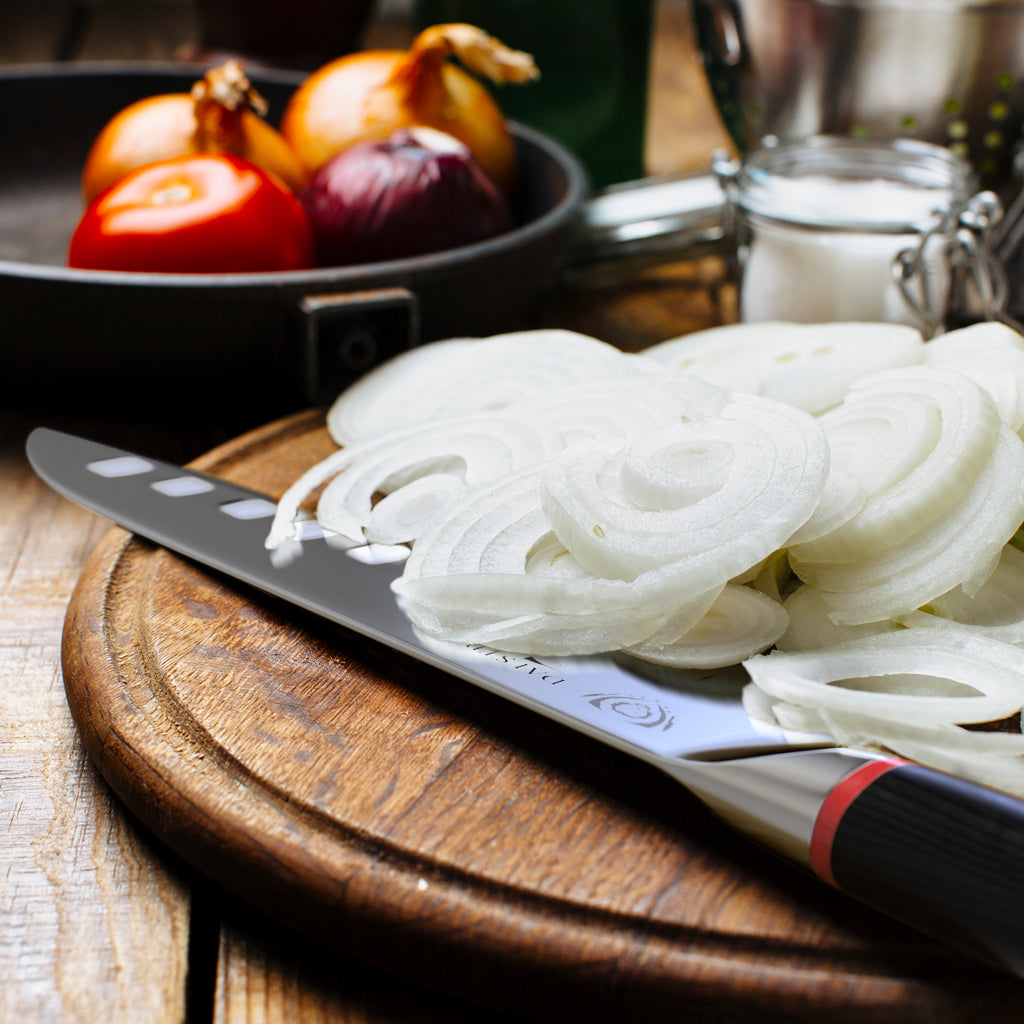A Quick Guide to Filleting Fish Like a Pro
 Fillet Knife 6" Delta Wolf Series | Dalstrong ©
Fillet Knife 6" Delta Wolf Series | Dalstrong ©
Quick Overview: Filleting Fish Like a Pro
- Lay your fish flat on your cutting board.
- Push the pectoral fin back and cut at a 45-degree angle, until you hit the bone.
- Simply start moving the knife down the length of the fish, using the backbone to guide you.
- Turn the fish over and repeat.
- Make sure to wash the resulting fillets.
Filleting fish is easier than you think. In this article, we’ll guide you through how to do it, including tools you’ll need and answering any questions you might have.
1. Why We Love Filleting Fish
 Fillet Knife 6"Frost Fire Series | NSF Certified | Dalstrong
Fillet Knife 6"Frost Fire Series | NSF Certified | Dalstrong
Everyone knows the importance of cutting a piece of steak to maximize its culinary potential. Everyone knows the importance of properly cutting up a chicken. But somehow, filleting fish is one of those underrated skills in the kitchen that people don’t really appreciate until they realize the difference between playing it by ear and actually knowing what you’re doing.
In my personal opinion, fillets are the perfect presentation for most fish. Not only is it a practical solution – reducing cooking time and making it easier to portion – but it also enhances the dining experience. Instead of avoiding bone, your guests can focus on the complex notes of the meat along with whatever seasoning or accouterments you decided to accompany it with.
Filleting is especially useful for bigger fish, since larger fish don’t easily fall apart. And if you fillet your fish, you’ll make it easier on yourself to eat the fish over several meals. Overall, filleting fish doesn’t just make it easier to cook, portion, serve, and eat the fish, it also often leads to some absolutely delicious recipes that would be too difficult to attempt on a whole fish.
2. Quick Guide for Filleting Fish
 Fillet Knife 6" Shadow Black Series | NSF Certified | Dalstrong ©
Fillet Knife 6" Shadow Black Series | NSF Certified | Dalstrong ©
Filleting fish is easier than you think.
- Lay your fish flat on your cutting board. If you have the type that includes clamps that you can secure the fish onto, do so.
- Push the pectoral fin back and use a sharp filleting knife to cut at a 45-degree angle, until you hit the bone.
- Turn your filleting knife slightly sideways until you feel the fish’s spine. Then simply start moving the knife down the length of the fish, using the backbone to guide you. Depending on your knife, you can do this in one fell swoop or use a sawing motion.
- Turn the fish over and repeat. It’s always easier with the back of the fish facing you, so you might have to rotate your cutting board to accommodate this.
- Make sure to wash the resulting fillets to make sure you’re fully clear of any intestines or any possible nastiness.
3. Tools You’ll Need for Filleting Fish
 Fillet Knife 6"Shogun Series ELITE | Dalstrong ©
Fillet Knife 6"Shogun Series ELITE | Dalstrong ©
There are a few essential tools you’ll need to fillet a fish.
- Optional: fish scaler. Most fish you purchase will already be pre-scaled, but if you’re going to be preparing the fish from scratch, it’s a good idea to have a fish scaler to work with.
- Fillet knife. This is absolutely essential. A sharp filleting knife will make filleting your fish much, much easier.
- Cutting boards or a fish scaling board. Many of them come with clamps that you can secure the nose of the fish too, making it easier to glide the knife down and produce those beautiful fillets. If you don’t have one of those, a good cutting board or chopping block will do nicely.
4. Best Dalstrong Filleting Knives
Dalstrong is a knife maker that has made a name for itself by manufacturing stylish, high-quality knives and making them available at affordable prices, resulting in a . Let’s take a look at some of the best filleting knives in their roster.
1. Curved Fillet Knife 6" | Gladiator Series | NSF Certified | Dalstrong ©
This curved 6 inch fillet knife from Dalstrong’s Gladiator series is one of the very best filleting knives available in the market, able to easily fillet, debone, descale, and otherwise prep all manner of fish or poultry. It features an extremely sharp 2.0mm thin blade, beautifully suited to glide smoothly along the bone and provide you with beautiful, flawless fillets.
PROS:
- The blade on this knife is truly wonderful, designed to make filleting a piece of fish into a pleasurable experience instead of an arduous chore.
- It’s made of precision-forged, ultra-sharp, single piece high carbon German ThyssenKrupp Steel, sharpened at 16-18 degrees per side.
- Features a gorgeous, ambidextrous black G10 laminated handle.
- Low maintenance and very easy to clean and look after.
CONS:
- At 6”, this filleting knife is more than large enough to handle just about any task you may need it for, but some seafood enthusiasts might prefer a larger knife. If so, check out some of the other options in this list.
- This is a flexible curved knife, and it does have some give. If you’re not used to a flexible filleting knife, it might take some getting used to.
2. Fillet & Boning Knife 6.5" | Phantom Series | Dalstrong ©
If you’re looking for a knife that can just as easily be used for filleting fish as well as to bone beef, pork, fish, and other meats, try this 6.5” fillet & boning knife from Dalstrong’s acclaimed Phantom series. Not only is it a ruthlessly sharp blade ready to face just about any difficult boning or filleting task, it’s also one of the most stylish and visually attractive knives on the market.
PROS:
- An impressive blade construction, made of Japanese AUS-8 steel.
- The blade also features a gorgeous design, with the Dalstrong name engraved as well as the Japanese kanji for “phantom.”
- With its rock-hollow divots, you won’t find yourself experiencing issues with friction or stuck on your food, instead gliding effortlessly through it.
- Includes a premium-quality polymer saya (sheath) to keep your knife protected.
CONS:
- This is a Japanese style single bevel knife, so keep that in mind if you decide to purchase it.
- This knife comes with a beautiful pakkawood handle imported from Spain; if you’re more of a fan of G10 handles, check out the other knives in this collection.
3. Fillet Knife 6" | Delta Wolf Series | Dalstrong ©
The Delta Wolf series features some of the coolest looking knives around, and this beautiful 6 inch fillet knife is a fantastic example of that. Not only does its rugged appearance make it a stylish and beautiful kitchen tool unlike any other, it also boasts incredible performance thanks to its premium quality materials, helping you make quick work of any fish or poultry.
PROS:
- Extremely thin blade, designed to get into the meat and glide easily down the bone, resulting in perfect fish fillets.
- The tip’s narrow blade (which is hand sharpened to a staggering 8 - 12 degrees) aids in easily filleting, trimming, skinning, deboning and descaling fish.
- The blade features a beautiful onyx-black titanium nitride coating, which reduces friction as well as adding an extra layer of corrosion protection.
- Triple riveted knife with a triangular multi-purpose loop, making this a great knife to show off on a magnetic knife holder.
CONS:
- Not everyone is a fan of this knife’s camouflage look.
- This blade is extremely thin at 1.6mm, which is great for filleting; however, if you’re a fan of thicker blades, try the 2mm curved filleting knife from the Gladiator series shared above.
4. Flexible Fillet Knife 7" | Gladiator Series | NSF Certified | Dalstrong ©
At 7 inches long, this flexible fillet knife has everything you need to produce beautiful, flawless fillets from any fish. Whether you need to gut the fish or descale it, this handy tool will aid you in all your fish preparation needs. And with its extra length, it can be used almost as an extension of your arm. It also features a 1.5mm thin blade.
PROS:
- Extra thin, flexible, and maneuverable blade, which will make slicing through flesh quite easy. You’ll even find it pleasurable to perform some tough jobs such as cutting through a fish’s rib cage.
- Made of precision forged, ultra sharp and single-piece high carbon German ThyssenKrupp Steel.
- The blade is hand polished and features a beautiful satin finish.
- The knife comes with a military grade G10 handle, which is extremely durable and comfortable to hold.
CONS:
- This is an extremely flexible knife, as a filleting knife should be. However, if you’re not used to handling this type of blade, there is a bit of a learning curve.
- This beautiful knife features an elegant and understated design; if you prefer something a little flashier, have a look at the next option in our list.
5. Fillet Knife 6.5" | Valhalla Series | Dalstrong ©
This is a different kind of fillet knife, not only because of its approach to blade design – with a broader approach, focusing on sturdiness in order to easily descale, debone, fillet, skin and trim your fish – but also due to its stunning presentation. With a look that’s inspired by vikings of old, this gorgeous fillet knife is a powerful kitchen tool that will aid you in more than just your fish preparation.
PROS:
- The blade features 5 layers of stainless steel at an amazing 60+ Rockwell hardness.
- Features a gorgeous sandblasted finish.
- The handle is made of premium quality blue resin and stabilized wood, which feels extremely comfortable to hold while also being very durable.
- Because of its broader blade, it’s a little more versatile than the rest of the knives in this list.
CONS:
- This knife is definitely less flexible than the other filleting knives in this list, which might present a bit of a challenge if you’re less experienced with filleting.
- This is another knife with an extremely unique look which might not be to everyone’s liking.
5. Frequently Asked Questions
How do you fillet a fish?
Set the fish on your fillet board with the back facing you. Slide the fish’s nose onto the clamp on the fillet board so it has a good hold of its nose. Pull back the pec fin and cut at a 45 degree angle until you reach the backbone. Then, turn your filleting knife slightly sideways until you can feel the spine. Lift the tip and push all the way through, slowly moving your way down the backbone until you reach the fish’s tail. Then, flip it over and repeat (it’s always easier with the fish’s back facing you).
What are the four steps to filleting a fish?
First, secure your fish in the fillet board. Then, pull back the pec fin and cut at a 45-degree angle until you reach the backbone. Next, turn your knife sideways until you feel the spine, then slide your knife down. And lastly, flip the fish over and repeat.
What is used for filleting fish?
In order to fillet a fish, you need a sharp filleting knife. A filleting board with a clamp for the fish’s nose is also recommended.
What is the first thing you should do when filleting a fish?
The first thing to do when filleting a fish is to lay the fish on its side on a flat surface. Ideally, the fish’s back should be facing you, as this will make it easier to cut later. If you have a filleting board, secure the fish in the board by using the clamp on the fish’s nose. This will give you the proper grip to comfortably and securely fillet your fish.



































































































































































